
In a previous Disney and more article called "The "Cinemagique" attraction movie you will never see at the Walt Disney Studios", you learned about these "balloon" movies - in fact a first test for the Cinemagique attraction, one of the best attraction at DLP's Walt Disney Studios.
Today, Lindsay Cave, Creative Director at "Tales from a Laughing Place" Magazine will tell you the complete story of Cinemagique creation in this excellent article previously published in Tales from a Laughing Place Issue 6.

From Paris, with love. By Lindsay Cave
FINDING INSPIRATION IN such a common-place item as a ringing cellphone is probably not something many can claim. Irritation would be a natural reaction as we can probably all testify that the cellphone has become so ubiquitous to modern life that one can wonder how we carried on before. A visit to the theater where someone answers that ringing phone mid-performance would be amongst the highest rated irritations caused by the pesky little devices. Such was the case for Walt Disney Imagineering Senior Creative Executive, Tom Fitzgerald, enjoying a Friday evening out in Los Angeles. Yet however annoying the interruption was (and Tom was still talking about it at the office on the Monday morning), Tom actually found a possible solution to a problem which had been troubling the team behind the project, CinéMagique.
In the first design phase for the second park of the Paris resort, when the gate was to be called Disney-MGM Studios Europe, a centerpiece attraction was to be created as ‘a valentine to the movies’, celebrating the passion and even love affair that people have for the cinematic art form. The design team who had worked extensively on the Disney-MGM Studios in Florida including the founding attraction of that park, The Great Movie Ride, came to this new project with the idea that the finale of that attraction might work as the base to this centerpiece. This finale consists of quick thematic cuts of famous movie scenes (directed by Chuck Workman), and is a very successful, emotive, but short piece. However the design team pondered the question of whether you could expect an audience to sit through twenty minutes of that kind of staccato production, and so they looked through longer pieces created by the same director and realised that it would be a tough experience on the eyes.
In the second design phase when the Studio format was revisited following the Resort’s financial difficulties of the mid-nineties, this centerpiece attraction was still there, but the nature of the presentation was still to be resolved. Tom Fitzgerald joined Show Writer Steven Spiegel, Show Producer Chrissie Allen and aimed to solve the problem.
“We just didn’t want to do a clip show as it needed to have some kind of story. After all we are Disney and storytellers. The presentation had to connect emotionally to the audience. We asked ‘How do we do that?’ and ‘What form does it take?” explains Tom.
It is how that resulting story gives cues to some of cinema’s finest moments that makes this production, situated in an unassuming Art Deco ‘screening theatre’ of the Production Courtyard, not only the most compelling attraction at Walt Disney Studios Park, but one of the finest attractions of the past ten years.
At this time, we remind you that no flash-photography or video taping is permitted and please turn off your cellphones, thank you. And now, the Walt Disney Studios is proud to present CinéMagique.
This is the story of George, a visiting American watching a screening of CinéMagique but with something else on his mind - the location of his luggage lost at a Parisian airport. Armed only with his trusty cellphone, George rudely interrupts the opening moments of the screening of this movie ‘celebration’ by answering his phone. In need of a better reception to speak to the caller from the airport, George proceeds onto the stage area in front of the screen, where clips from silent films are currently playing, whilst the theatre hosts call for security to remove him. On the screen, a black and white scene plays on of a beautiful girl, an Arabian sheik and a wizard. Like the rest of the audience, the actors have become distracted by this interruption, so the wizard turns towards the stage, raises his hand and with a flash of light and smoke pulls George into the screen.
The sheik charges at George with his sword and as he lies on the floor, the beautiful girl Marguerite, comforts him. George escapes from the pursuing sheik into a different scene, Harold Lloyd’s Safety Last, and George’s adventures through famous scenes of both American and European cinema begins, whilst the smitten Marguerite follows him...

THE BALLOON TEST
Of course story doesn’t always fall into place straight away, and despite that most familiar of movie narratives, a love story becoming the end result, other avenues were explored. The term Balloon Test, when associated with the work of Walt Disney Imagineering, refers to height testing with the use of a balloon for structures in relation to the surrounding buildings and sightlines. No such test was required in the making of this film other than that of a story concept.
With cinema being heavily dominated by Hollywood’s output and the attraction being placed in France, it was very important to the team that there was a very international flavor to the presentation. As Steve Spiegel, the production’s show writer says, “We wanted to make sure it wasn’t just an Americanised show.”
Tom takes up the story, “We literally went through dozens of ideas and one that lasted for a while was ‘What can we pay homage to in France?’ We all remembered the movie The Red Balloon [Le Ballon Rouge 1956 - directed by Albert Lamorisse] where a balloon comes to life and a boy has this adventure with it.” With a similar setup to the final production, a red balloon would become the objectionable distraction to the audience, as the host tried to get a child to keep the balloon down. Inevitably, the child lets the balloon go and the parent chases after it and gets pulled into the screen. The adventure would then be all about getting the balloon back to the crying kid.
“We progressed a long way down the road with this,” Tom continues “we story-boarded that whole concept out and did some tests on it.” Those tests included a video presentation edited together overnight by the film’s director Jerry Rees (a name familiar with other Theme Park Productions, Disneyland: The First 50 Magical Years, Back to Neverland). This short and hilarious clip featured famous scenes such as Casablanca, Mary Poppins and Star Wars with the addition of a CGI balloon interacting with the characters in the scenes. The story would have continued in a somewhat extravagant manner, where the balloon became a larger than life object creating the ‘spaceship’ shadow cast in Independence Day and be in need of resuscitation after being skewered in a Braveheart scene!
Steve sums up the role that this clip played, “We laughed and laughed and we presented this and thought it was very funny but again [just like with the end sequence of The Great Movie Ride], in a short segment its very cute, how do you keep it going, how do you get emotionally involved in a balloon? And you just sit there and think - why don’t you just buy your daughter another balloon?” Although the ‘balloon test’ ultimately failed, there was one result from the clip which made the process easier going forward. Rees’s remarkable overnight CGI balloon experiment showed how digital technology would help the seamless addition of new characters into existing film footage. “We absolutely believed that we could put someone into a scene and it would add an extra layer of fun for the audience especially if it was a juxtaposition of someone from the real world getting in there...” notes Steve.
As the team developed the idea that a romance of boy meets girl, boy loses girl, boy gets girl back was the hook to get the audience emotionally involved, there was still the problem of how do you get the audience character into the screen, how would the story start. Then Tom Fitzgerald went to the theater, “When I came back in on Monday, I said I know what we have to do - lets explore this.”
This exploration centered on whether a shill (stooge) could be placed in the audience, with a speaker closely aligned to that seat, and have the answering of the phone be so obnoxious as to stop even the performers on the screen. Yet if this were the case and believable there would be the risk that the shill could get hurt because the audience would be guaranteed to get irritated too. “We knew they would try to ‘shush’ the guy and although we wanted that, we had to make him move quickly from his seat onto the stage area. We really were afraid that he was going to get slapped!” Steve explains.
To further ensure that the character of ‘George’ was not going to get off on the right foot with the rest of this mostly European audience, he was ultimately cast as the ‘ugly’ American against not only an international screen cast but also against the beautiful French woman, Marguerite. George is played by Martin Short who is another familiar name to the Disney theme park audience. He appeared in Monster Sound Show at Disney-MGM Studios and Wonders of Life’s Making of Me at Epcot, along with film success in Three Amigos, Father of the Bride and Innerspace. The role, though had initially been considered as more appropriate for an ‘international’ actor. Roberto Benigni was first choice in this regard but his commitment to his Pinocchio movie (2002) removed him from the equation.
“Whoever was going to play this character was going to have to say a lot without saying a lot of words, and have a rubbery face that can be very comedic and yet show sadness, love, happiness, surprise and fear,” says Tom. “From our past experience of working with Martin, we knew he was so easy to work with, and we did put him through hell, a water tank one day (for an underwater encounter with Pinocchio), pies in the face the next. Thankfully he is a certified diver and had no problems with it.” Short signed on after being sold on doing a scene from Harold Lloyd’s Safety Last.
The role of Marguerite went to the beautiful French actress Julie Delpy, most famous for her roles in Before Sunrise, Before Sunset and ER.
With an international cast, language was going to be the biggest challenge to the success of the show as it is with all the shows found at the Parisian resort. “Years before we had produced Le Visionarium [which later became Time Keeper at Magic Kingdom and Tokyo Disneyland] where we developed ‘Fringlish,’” Tom explains. “This is really an R2D2 to C3P0 style of dialogue. If you think about those two characters, C3PO always has to translate for the audience what R2D2 is saying but it is done in a way you don’t realise as it’s so natural. There is this one scene in Visionarium where Jules Verne talks to HG Wells, (a Frenchman talking to an Englishman) and they translate for each other. ‘From the Earth to the Moon?’ ‘No I’m not going there I’m going here...’” With the structure of the movie being set by film chronology (and genre), language was not an issue as the movie begins with the silent era using subtitle cards, so both French and English could be shown. As the story of film progresses through the talkies, color and widescreen there was the reliance on this ‘Fringlish’ between the main characters. Eventually George speaks French mixed in with English and the transition appears natural.

With the team solving the challenges of story, casting and scripting, they set about creating an even bigger challenge for another group of people, the Disney legal department. One look at the end credits to CinéMagique shows not only the list of the creative talent involved in the production but the legal acknowledgement to the numerous clips of films used. For a Disney production, there are few references to Disney films, though they are notable when they appear, (Pinocchio, Mary Poppins and added very late, Monsters, Inc.) The process of choosing the right clips to tell the story would send the legal team off to not only get the rights from the producer, director or actor, but under French legal requirements, from the music composer and writer too. “We were making lists of movies, the greatest Hollywood movies, and doing research on what were considered the greatest European films, but how do you get the rights to all these?” Steve explains. “We had wish lists and then you get to the reality, but you are also trying to plan your shoot and you’ve got to figure out what sets you’ve got to build, and how to put George into them - along with the dialogue and who George is going to talk to and you’ve gotta get this stuff cleared, our legal people just did an amazing job right up to the wire.”
The films chosen are very interesting in the reach to a contemporary audience. Monsters, Inc.’s Thanksgiving 2001 release was the most current film represented before park opening in March of 2002. “Monsters, Inc. came out just about the time we were locking the film and as soon as we saw the doors sequence we knew we could swap out something we were never happy with,” says Tom. In a sequence aboard the Titanic, George opens a series of doors to reveal scenes from other films, including John Cleese hiding his modesty in A Fish Called Wanda, the French original of Three Men and a Baby, The Pink Panther and perhaps the most surprising inclusion of all, the Exorcist! The swap was for another horror film Scream. “When we did our test screenings here, everybody sort of got a little bit nervous about the kids in the audience, so Monsters was perfect and it gave us another animation piece,” Tom explains.
Titanic would become one of the bedrocks to the movie’s contemporary acceptance, along with Star Wars. “I think Titanic and Star Wars were the key anchors for the audience,” Tom reveals. “Even though the Star Wars movie that we chose [A New Hope 1977] was not recent it worked because the next set of films were in the works at the time, we knew that it would be fresh and Titanic is such a classic. So if we have those then alot of the rest of the clips can be from the past and the audience would accept it.” Yet there was one day and one phone call when one anchor’s chain was set to break as the legal team said ‘I don’t think we can get the rights to Titanic.’ “I was like we have to have Titanic! We have to have it - you can’t do this without Titanic!” Tom exclaims.

Sometimes getting the rights were so tight that a reserve sequence would be proposed just in case. The first color scene encountered in the movie is where George falls from the black and white set of Some Like it Hot through a window into a color western environment. “The Good, The Bad and The Ugly sequence was shot two ways because it hadn’t cleared at the time of shooting so we had to have a back up,” says Steve. “First we shot The Good, The Bad and The Ugly, then a generic western and it’s so frustrating when you know there’s one that you want to have, and thankfully we got it!”
So with the legals in place, shots were planned exactly with Jerry Rees so only partial sets needed to be built on two downtown LA soundstages. The cinematographer, Thomas E. Ackerman studied the original movies to research what lenses and film stock were used so the match could be as close as possible. “The film stock and the lighting worked so well and made the intercuts so authentic. It was such fun for us to be like, on the Death Star ‘We’re on the Death Star, I love it, I love it!!” Steve says excitedly. “It was like a dream - you’d turn the corner of the Death Star and you would be in the hallway of the Titanic!” adds Tom.
But there was still one piece left to make this cinema-magique - the magic. The audience would become fully aware that once the wizard (gloriously played by Alan Cumming) had taken George into the screen at the start that this wasn’t going to be a regular clip show, and the theater itself was to play its part. Initial designs for the attraction showed a flying saucer crashing through the building and even at one point in the final incarnation there was to be a man riding a horse during the western scene, through the screen onto the stage! As Steve reveals, “Michael Eisner [the former CEO] loved it, but eventually it got shelved - it just didn’t prove to be practical!” Other impractical ideas involved a man getting thrown out of a door on the screen to land on the stage but that was shelved during tests when someone broke a rib.

Apart from a familiar dousing with water which affects the audience directly the majority of theatre effects happen on the stage area. The most impressive being the climatic sword slicing through the screen which lands point down into the stage. “We did keep experimenting as the story evolved, trying to think how would we get the character in and out, because the goal of the character is that he wants to get back to the real world, until he realises that love is more important than his... luggage!” Tom comments.
The actual ‘magic’ of the presentation is a very complicated mechanism, which allows interaction with a moving screen. “We had to be very careful of the clips that we used so that it would never reveal the screen’s secrets, we had to change some shots because they were too bright at key moments, so darker shots were used for masking,” Steve explains.
Another favorite for the team turned up to write the requisite score. “We got composer Bruce Broughton [The Rescuers Down Under, Le Visionarium...]
because he gets our product so well and every project we bring to him is more complicated than the last - and he always starts off every project with ‘I don’t know how I’m going to do this’ then he figures it out,” says Steve.
The complication for Bruce on this project was working with the existing film clips and intertwining his original score. “Some film clips you could get with dialogue only and no music and some you can’t. Casablanca for example doesn’t have what are called ‘stems’ where the music, dialogue, sound effects are all separated so we couldn’t use what we wanted. Bruce had to write his score so that it goes right into ‘As Time Goes By’ and come back out of it to where he wanted - still he did have the fun of using the themes of Gone with the Wind and Star Wars - in fact it was the same kind of fun that Jerry Rees had in playing with all the old films - he used to say on the set - ‘another day, another movie!’ What are we doing today...?” adds Steve.
There is definitely an emotional connection with the audience as the film plays, whether this is due to the familiarity of the scenes that George and Marguerite find themselves in or perhaps the audience comes to see George as one of them involved in something that they would love to do too. “I think my favorite moment in the movie is one which Martin Short ad-libbed,” says Tom. “During the Titanic scene where George comes downstairs and hears Leonardo De Caprio screaming he goes ‘Jack is that you?’ The audience always laughs because it reminds them that he is from the real world, so he would know the character’s name, its truly surreal.”
Yet the real world too can play its part in all this fantasy. The principal photography was done barely 6 months before the park previews over a two week period, with September 11 hitting right in the middle. “We shut down that day and when we came back everyone was really shaken and we were doing the movie’s most emotional shot too - where George has the arrow in his chest [actually protected by the phone] and Marguerite cries over his body. It was too difficult so we waited a day or two to shoot the scene,” Steve explains.

There is one question that is asked above all others in regard to CinéMagique... will it ever perform at any of the other Disney Resorts? Tom smiles and says, “We’d love it to. We’ve looked at what it would take to bring it to the States... a little dubbing - take a little French out of a couple of places which could make it easier for an American audience.” But he sums up the most difficult aspect - relicensing, as the film is only licensed for use at the Parisian park, “I think the legal department would just up and quit!”
Whether CinéMagique ever makes it to other shores, it remains to be seen but it certainly does deserve to be seen by many more people, and rightly won an industry THEA award in 2003.
Walt Disney Studios Park is often criticised for a lack of charm, size and warmth, but one thing that it cannot be criticised for is having a big heart and for having it in the right place. Studio 2, the home of CinéMagique.
All Pictures: copyright Disney
All my thanks to Lindsay and Lee mac Donald for the authorisation of ppublishing this great article! This article was previously published in Tales from a Laughing Place, without a doubt the best magazine about Disney theme parks. Learn more about it in my previous article HERE.
Youtube videos by Cybershire whom i also thanks a lot!










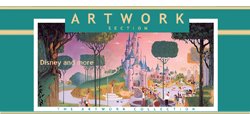
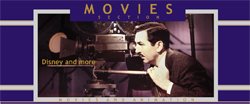



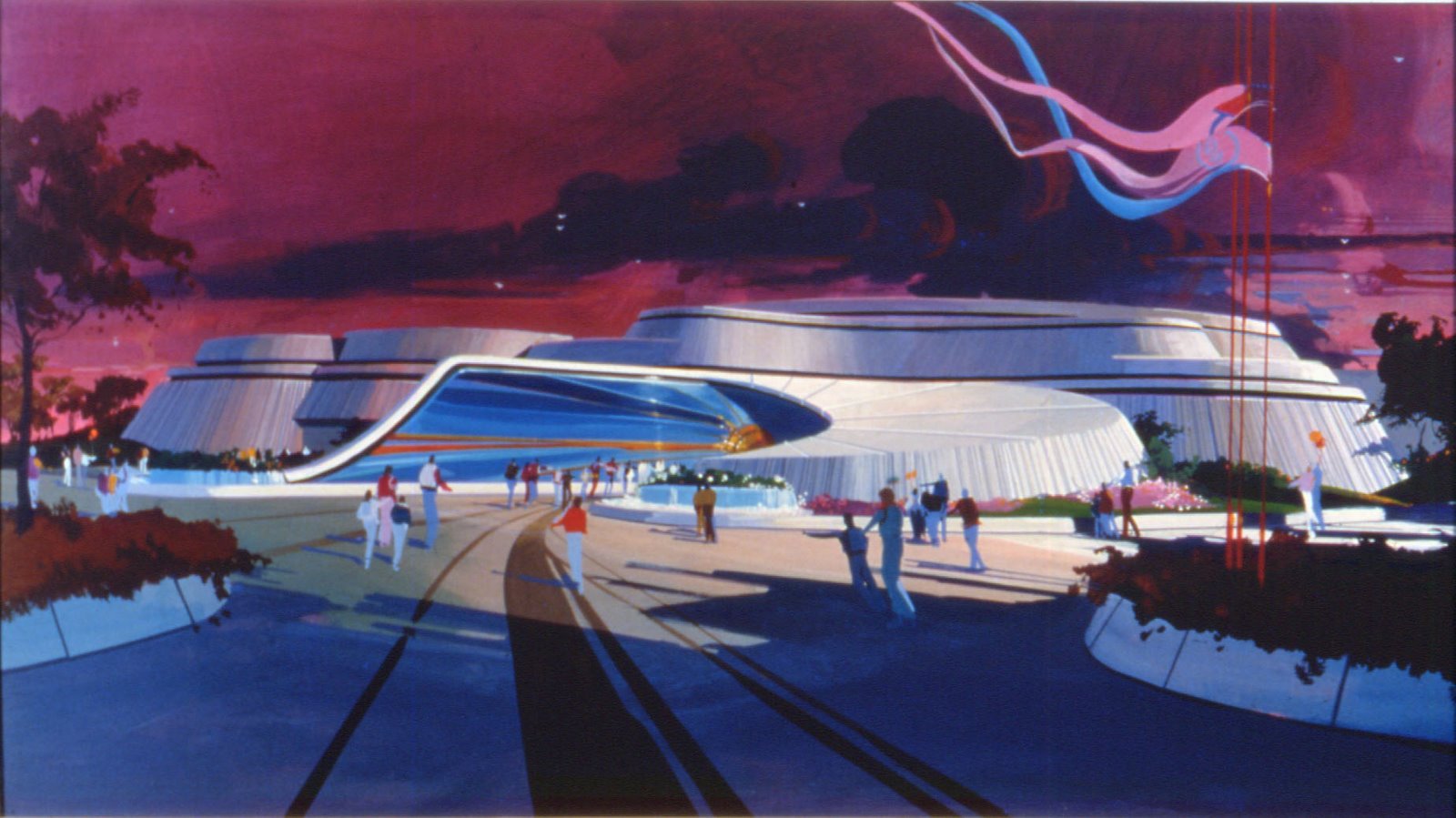







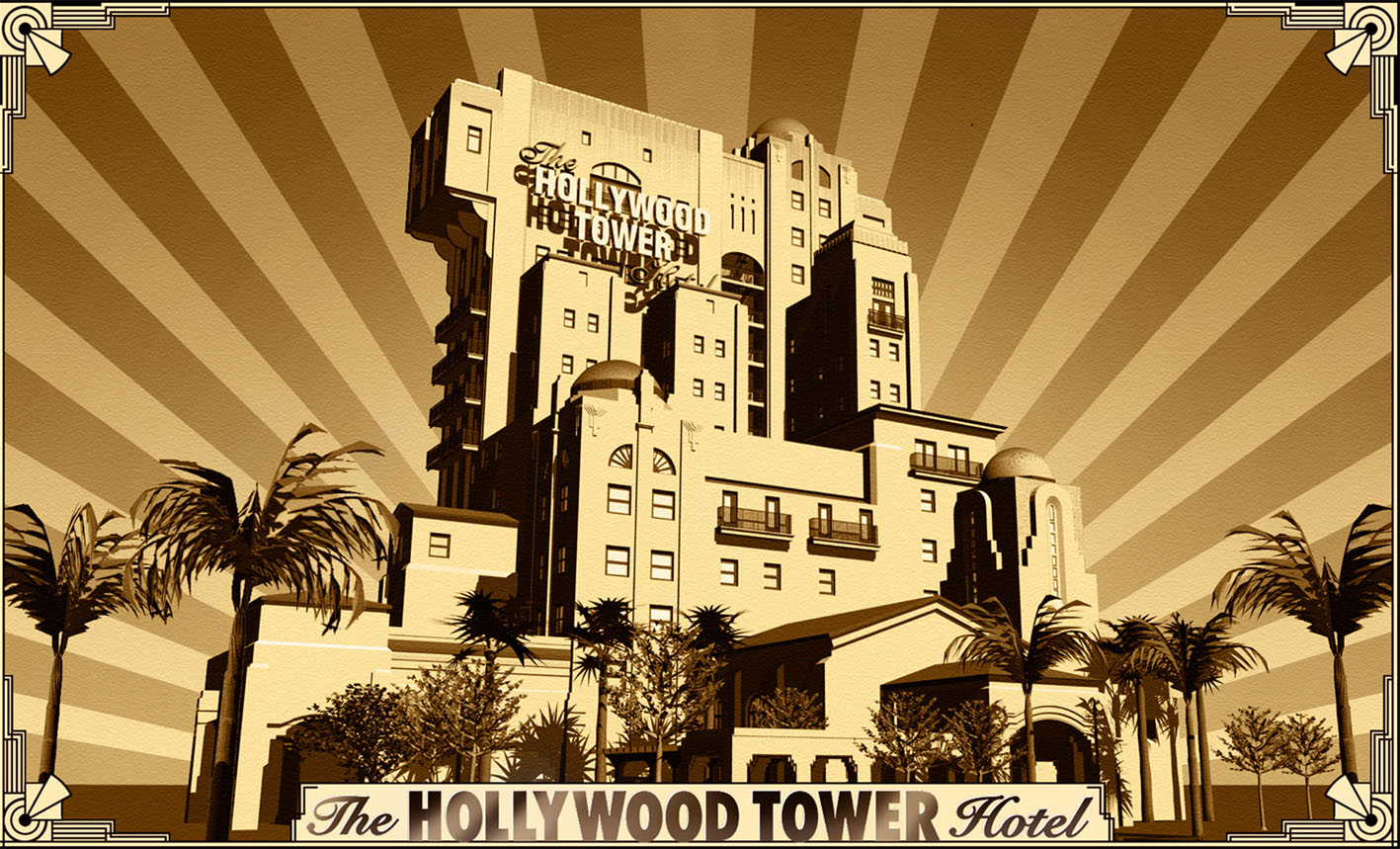



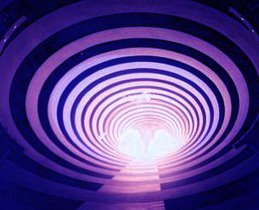
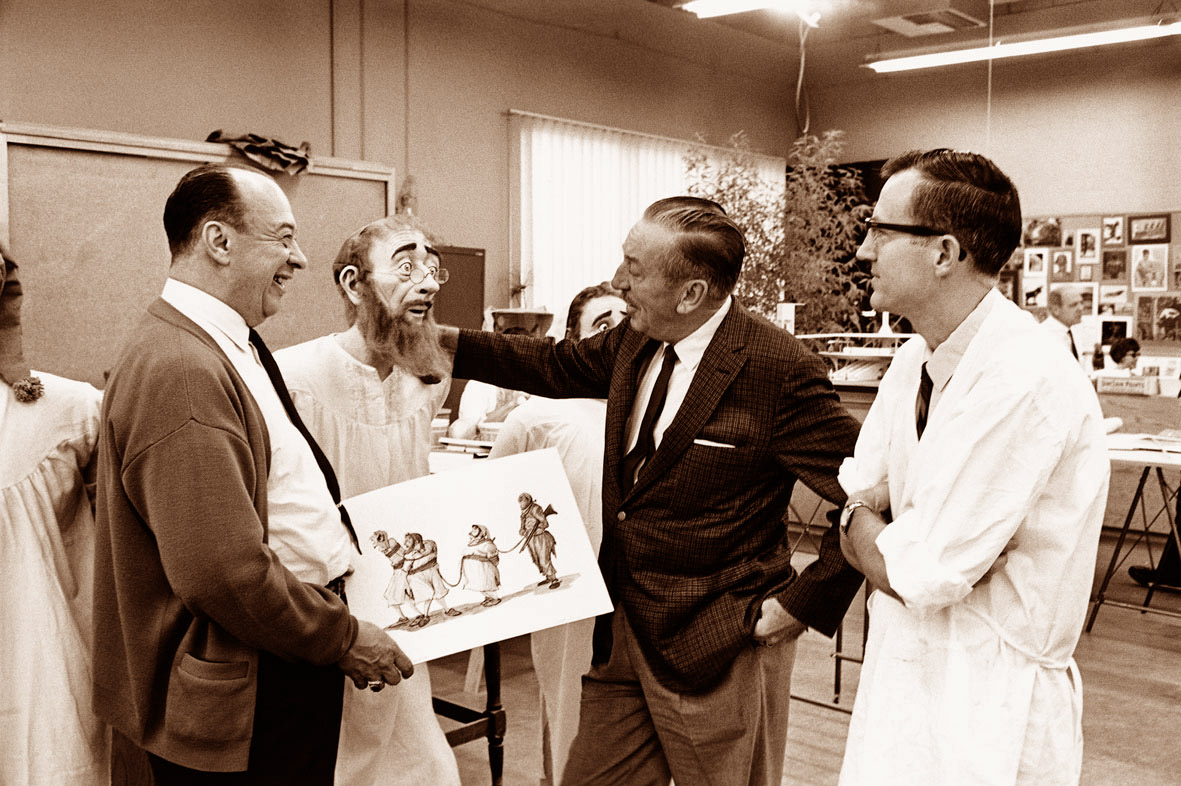
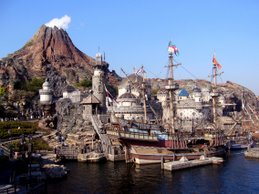

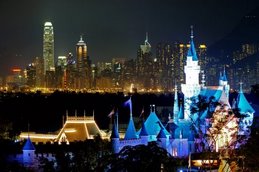

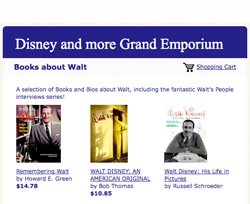









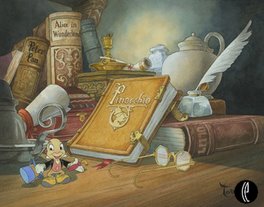
5 comments:
Love this article,this is my favourite attraction in the Studios.
Possibly one of the best and most underrated attractions in both parks.I can not count the times I have seen this and it always remains fresh and leaves a tear in my eye.
A must see.
A great article - I must get this magazine now! I see they have a massive piece on the creation of EuroDisneyland with the original imagineers too!
Do you possess know for what reason I accept Java fault warning while loading your blog in Explorer ?
As a final note , permit me thank you for your understanding with my English as (I am persuaded you have become aware this by now,), English is not my head tongue as a result I am using Google Translate to form out what to note down what I really wish to write .
Sorry, but i really don't know why this happening. You may try to access my site from another browser, like Firefox.
Post a Comment